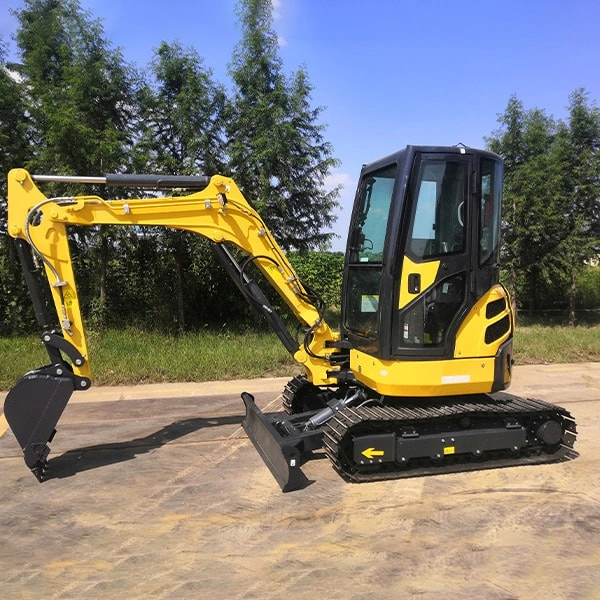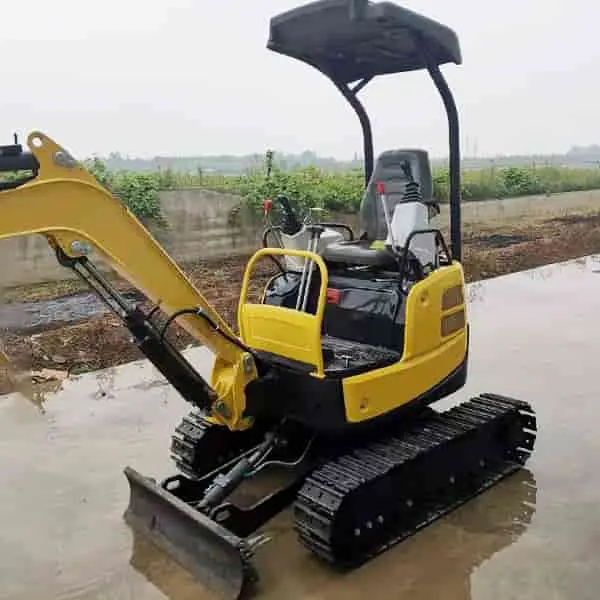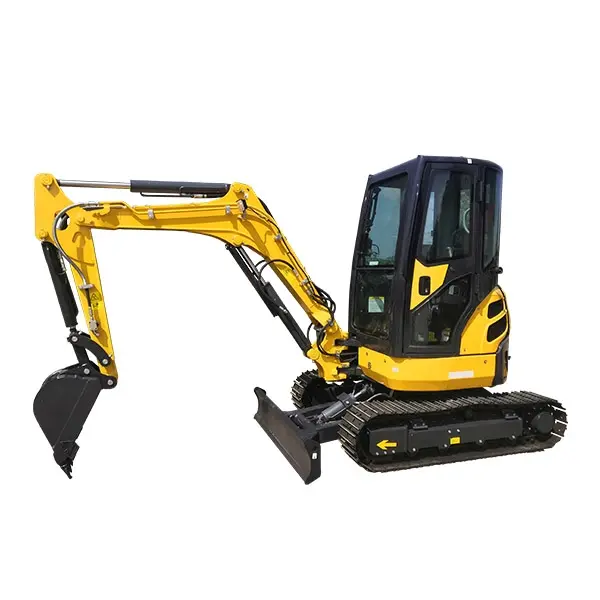معرفی
Whether you’re a contractor taking on residential jobs or a homeowner tackling weekend projects, a mini excavator can be an invaluable piece of equipment. However, with various models available from top manufacturers, choosing the right mini excavator can seem daunting. This guide will walk you through the key factors to consider and help you select the machine perfectly suited to your needs.
Bucket Size and Operating Weight

One of the first specifications to examine is the مینی بیل مکانیکی‘s bucket size and operating weight. Bucket size determines how much dirt and debris the excavator can carry with each scoop. Operating weight also influences digging power as well as mobility. Heavier excavators with larger buckets are best for tasks like grading and trenching but may not be practical for confined job sites.
The table below summarizes common mini excavator sizes and their typical applications:
| مدل | Bucket Size | وزن عملیاتی | Suitable Projects |
|---|---|---|---|
| Compact (1-2 ton) | 12-18 inches | 2,000-4,000 lbs | Landscaping, utilities in tight spaces |
| Utility (2-4 ton) | 18-24 inches | 4,000-8,000 lbs | Foundation work, utility installation |
| Standard (4-8 ton) | 24-30 inches | 8,000-12,000 lbs | Commercial site work, grading |
As a rule, compact models are well-suited to residential jobs and working in confined backyards or indoors. Utility-class excavators offer more power for heavier tasks while maintaining good mobility. Larger standard excavators are best applied to commercial construction sites.
Attachments and Options Of Mini Excavator
Attachments and Options of Mini Excavator
Mini excavators are versatile machines capable of performing a wide range of tasks thanks to their compatibility with various attachments and options. These attachments enhance the functionality and adaptability of mini excavators, making them indispensable tools for construction, landscaping, and utility work. In this brief blog post, we’ll explore some of the common attachments and options available for mini excavators.
Bucket Attachments
Bucket attachments are essential for digging, scooping, and moving materials on construction sites. Mini excavators can be equipped with different types of buckets, including standard buckets for general excavation, ditching buckets for shaping trenches, and grading buckets for leveling surfaces.
Augers
Auger attachments enable mini excavators to drill holes efficiently for installing fence posts, footings, or utility poles. Augers come in various sizes and configurations to accommodate different soil types and drilling depths, providing versatility for various construction and landscaping projects.
Hydraulic Breakers
Hydraulic breakers, also known as jackhammers, are ideal for breaking up concrete, asphalt, or rock during demolition and renovation projects. Mini excavators equipped with hydraulic breakers can efficiently tackle tasks such as removing old pavement, breaking up foundations, and clearing debris.
Grapples
Grapple attachments are useful for handling bulky materials such as logs, rocks, and debris. Small excavators fitted with grapples can easily pick up and move large objects, making them valuable tools for land clearing, forestry, and waste management applications.
Tilt Rotators
Tilt rotators provide small excavators with enhanced maneuverability and precision by enabling the attachment to rotate and tilt in multiple directions. This versatility allows operators to perform intricate tasks such as grading, landscaping, and precision digging with ease and efficiency.
Thumb Attachments
Thumb attachments, also known as hydraulic thumbs or clamp attachments, are designed to grip and manipulate objects with precision. Mini excavators equipped with thumb attachments are well-suited for tasks such as loading and unloading materials, sorting debris, and placing objects with accuracy.
In addition to these common attachments, small excavators can be outfitted with a range of options such as auxiliary hydraulic circuits, quick couplers for rapid attachment changes, and cab enhancements for operator comfort and safety. By choosing the right attachments and options, mini excavator operators can maximize productivity and versatility on the job site.
In conclusion, the attachments and options available for mini excavators significantly expand their capabilities and adaptability for various construction and landscaping tasks. Whether it’s digging, drilling, breaking, or grasping, small excavators equipped with the right attachments are indispensable assets for tackling a wide range of projects with efficiency and precision.
Fuel Type and Engine Features

Most small excavators run on diesel fuel but liquid propane (LP) models are growing in popularity as well. LP excavators produce fewer emissions and offer fuel cost savings in some areas. Examine engine horsepower, fuel efficiency ratings, and the projected lifespan of components to suit your needs.
Manufacturers like Hitachi, Komatsu, Case, and Kubota are leaders in the mini excavator market. Their machines are rigorously tested and backed by strong dealer networks for repairs and maintenance support. Choosing a top brand provides peace of mind.
نتیجه
We hope this guide has helped explain the key factors for selecting the right mini excavator. Consider your planned tasks and property constraints to determine the optimal machine size, features, and attachments. An excavator from a reputable manufacturer will serve as a versatile workhorse for all your projects.
سوالات متداول
What factors should I consider when determining the appropriate size of a mini excavator for my project?
- Answer: Size considerations include the dimensions of the work area, access constraints, and the specific tasks the excavator will perform.
How do I know if a mini excavator is suitable for the terrain of my project site?
- Answer: Terrain suitability depends on factors such as ground conditions, slope gradients, and obstacles present on the site. Evaluating these factors will help determine the ideal type of mini excavator for your project.
What are the typical maintenance requirements for a mini excavator?
- Answer: Maintenance tasks may include regular fluid checks, lubrication of moving parts, filter replacements, and inspection of tracks or tires, among others. Adhering to the manufacturer’s maintenance schedule is crucial for ensuring the excavator’s optimal performance and longevity.
Are there specific safety considerations I should be aware of when operating a mini excavator?
- Answer: Yes, operating a mini excavator safely requires proper training, adherence to safety protocols, and awareness of potential hazards such as overhead obstacles, underground utilities, and unstable terrain. Employing safety features such as backup cameras and proximity alarms can also enhance operator safety.
What are the financing options available for acquiring a mini excavator?
- Answer: Financing options may include outright purchase, leasing, or financing through equipment dealers or financial institutions. Factors such as creditworthiness, down payment requirements, and interest rates should be considered when exploring financing options for a mini excavator.







-150x150.webp)
